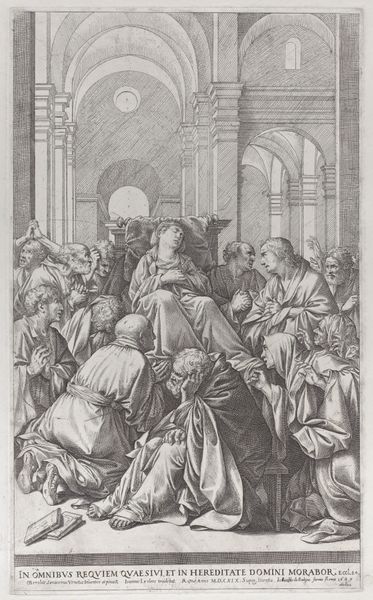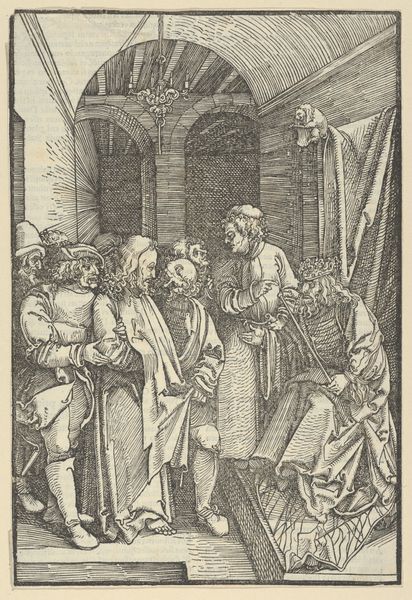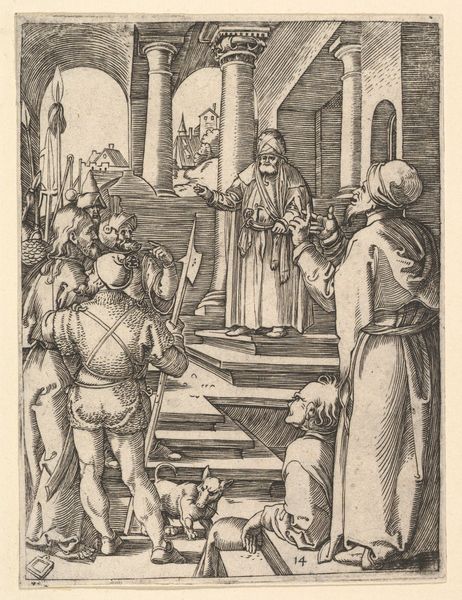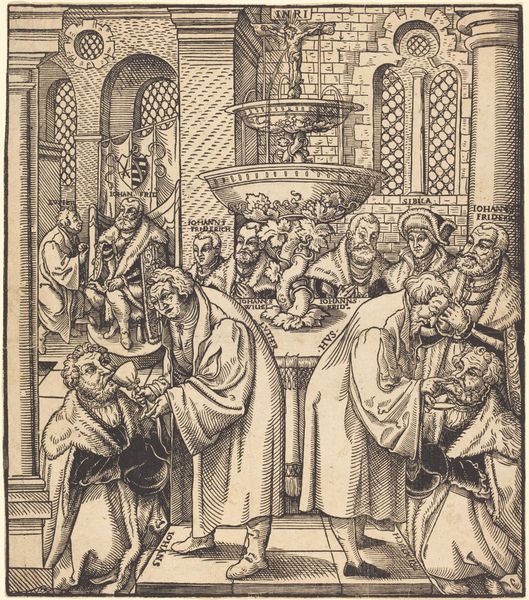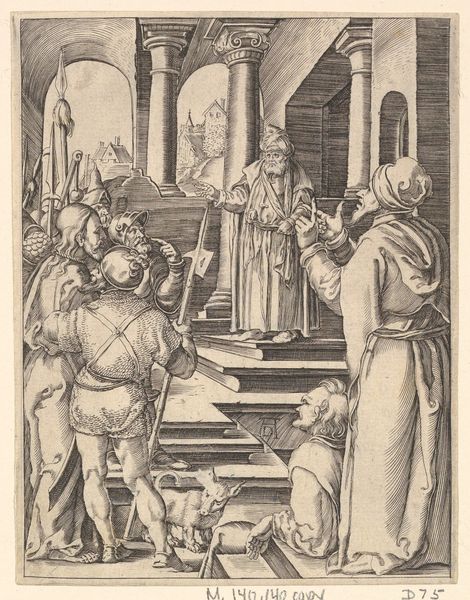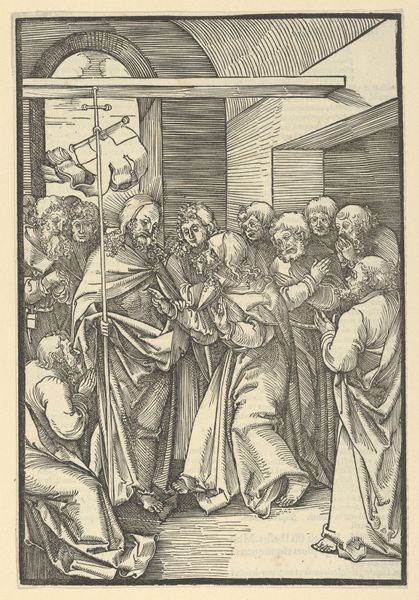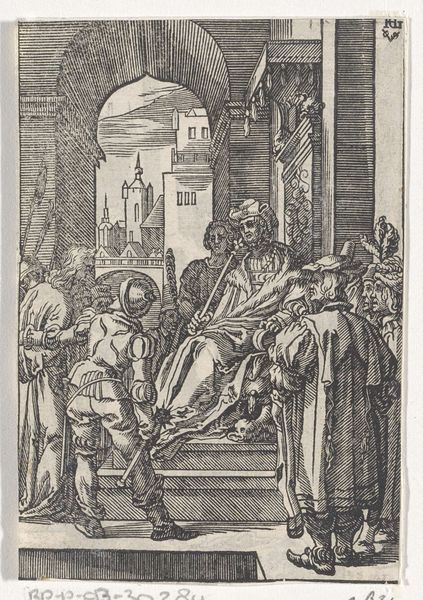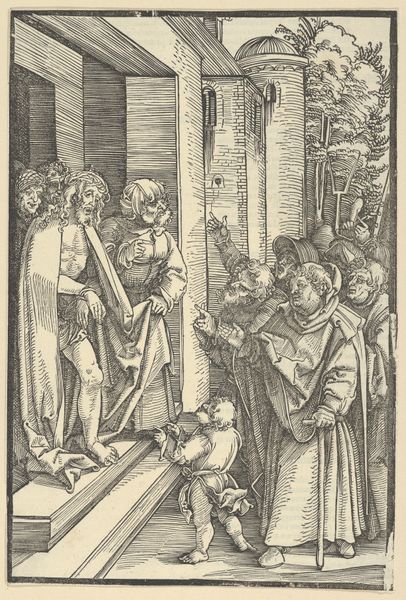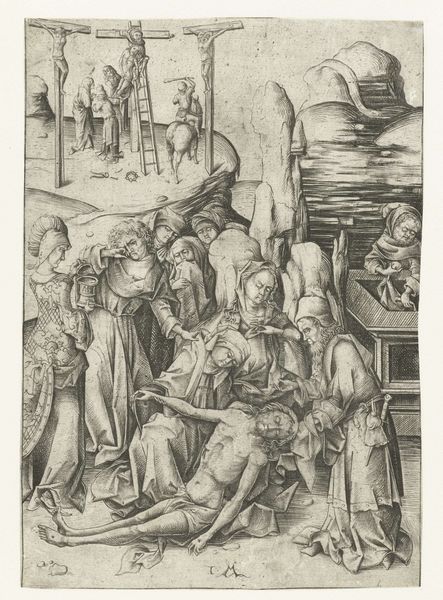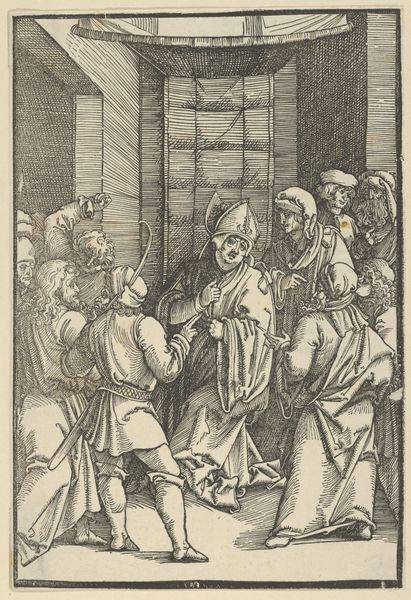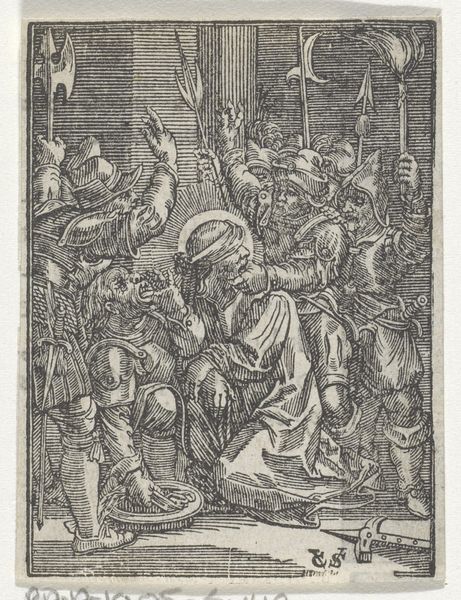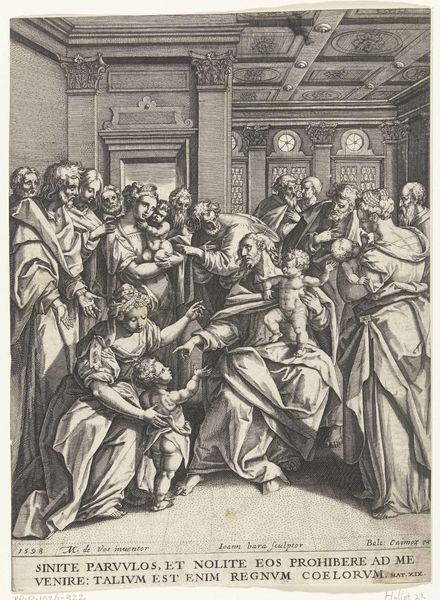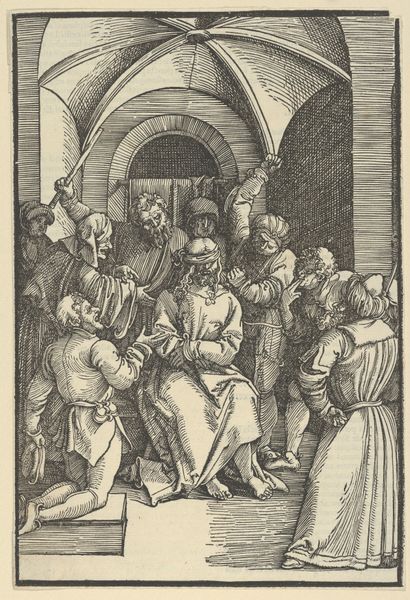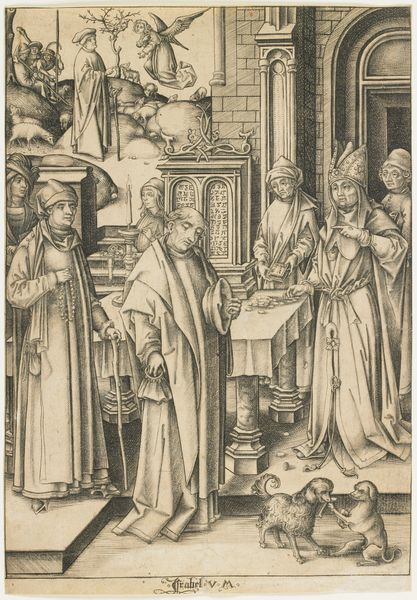
Dimensions: height 159 mm, width 107 mm
Copyright: Rijks Museum: Open Domain
Curator: Reinier Vinkeles's engraving, "Lijkstatie van Keizer Karel V. bij Levenden Lijve," created between 1751 and 1816, offers a window into historical performance of power and faith. It's housed here at the Rijksmuseum. Editor: The pallid tones and severe lines render this scene strangely mournful. The sheer repetition of figures swathed in cloth contributes to this feeling—an almost monotonous dread. Curator: Indeed. Vinkeles' mastery with line and form gives a sense of the somber atmosphere during this elaborate funeral procession. Note how the receding arches and the varied postures direct our eye toward the implied sanctity of the church interior. Editor: But it also strikes me as a meditation on spectacle. Charles V, despite his abdication, sought to impress his successors, perhaps to perpetuate an image of unwavering piety. This wasn't just about religious conviction; it was calculated. Curator: Of course. There's a dialectic tension here: Vinkeles harnesses baroque sensibilities, yet the clarity of the figures hints at emerging Enlightenment ideals. There is no obvious emotional extravagance; everyone is neatly situated within the compositional architecture. Editor: Perhaps it is this exact restrained emotionality that troubles me. The work lacks a critique of this staging, leaving us, viewers, passive witnesses to its potential manipulation. What would this ritual mean to those living in subjugation under Imperial rule? Curator: Interesting question, however, can't the historical moment and detail in the lines suffice as critique? In other words, might the absence of direct judgement also invite our evaluation? Editor: Well, it pushes us to engage critically with history and with how such displays function to reinforce the status quo, even centuries later. It prompts questions about performativity and the narratives of power. Curator: Precisely. The beauty here is its capacity to evoke a discourse, albeit in a subtle visual manner, even hundreds of years later. Editor: I am left contemplating how history's weight can be rendered and made to linger so meticulously on paper. Curator: An apt summary. Its echoes resonate, long after the initial act of engraving.
Comments
No comments
Be the first to comment and join the conversation on the ultimate creative platform.
